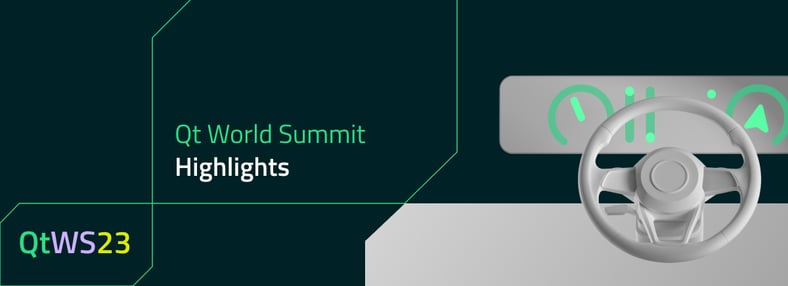Automotive Industry Shifts to Software-First Approach
January 26, 2024 by Nghi Dang | Comments

There has been a growing trend among automotive manufacturers transitioning into software companies. Since 2022, there have been increased discussions about what automotive companies can learn from the gaming industry. One learning was to move away from being a traditional manufacturer of a single physical product and instead focus on providing software-based services that can be updated or improved over time, which is what a software-as-a-service provider is.
Not being confined to the traditional 'deliver-and-forget' model offers the advantage of fostering a dynamic and continuous relationship between customers and car manufacturers, characterized by ongoing evolution. As software and service providers, car manufacturers will proactively predict customers' needs and design superior personalized products. It's more than just gathering data about your customers. It is a transformation of a business model to adapt to the rising needs of the market to understand consumer behavior better to create outstanding user experiences and better value for their investment.
The Shift Towards Software-as-a-Service
Because technology is an undeniable part of our lives and many professions, our expectations when consuming products and services now follow what technology can provide. An example is the rise of subscription-based car services like Care by Volvo and Porsche Passport. These services allow customers to access a fleet of cars for a monthly fee, with the option to switch cars as frequently as they like.
Hence, as automotive software development tools continue to play a more significant role, car manufacturers should consider transforming themselves into software companies. This way, they can provide more than just cars and focus on enhancing the in-vehicle user experience. At the Qt World Summit #QtWS2023 session, "The non-zero-sum approach to HMI UX/UI development" last November, Qt Product Manager, Patrick Thurman mentioned that big names in the industry, such as Mercedes-Benz and Hyundai, are now looking beyond just selling cars through dealerships or selling hardware, but want to monetize with SaaS offerings for higher margins, life-time value, lower cost of acquisition, and upselling opportunities through software. However, automotive OEMs must build a software platform to move towards the SaaS business model.
"...if they're all the time being pushed around by what their actual software providers, what their tier ones, tier twos are doing, then they're going to start to run into problems because all of a sudden you are not able to move in the direction that you want to, you're moving in the direction of where your suppliers are moving."
- Patrick Thurman, Qt Product Manager
Other Trends in the Software-Defined Vehicle Era
A software-defined vehicle (SDV) is generally known as a vehicle that manages operations, features, and functions primarily through software. Saying the automotive industry is adapting to this trend means they are transforming from hardware-focused to software-first. An example here is the emergence of connected car technology. Connected cars use software and sensors to gather data on the car's performance, location, and driver behavior, which the automotive companies can use to improve safety, efficiency, and user experience.
Another trend in the automotive industry is that car manufacturers constantly seek opportunities to differentiate from their competitors and align with the market demand. We have seen it in the APAC market, where the automotive industry is among critical verticals, that many vehicles have built-in apps as a response to automotive OEMs' continuous questions and demands – "what is needed to create a 'modern' UI for a car?", "what is creating that modern experience?" and "how can you be cutting edge?".
Last but not least, HMI development is gaining more of a smartphone UX/UI for our shifting demand to consumerized experiences. The present question nowadays is about how it feels to be in the car rather than merely what gadgets the vehicle can provide.
The Non-Zero-Sum Approach to HMI UX/UI Development
In a way, all these trends that we have observed also speak to each other and are all heading towards a software-first revolution in the automotive sector, with higher focus and demand for the customer user experience and a transformative outlook on the customer relationships with the car manufacturers - soon to be software and service providers. All these trends are among many that have been and will come in the automotive industry, as it seems the industry is at an 'innovative renaissance' for the questions of what we will do next and how we can push the bounds further, for instance, continuously emerge.
At Qt, we also bring the needed technology to empower the software-defined vehicle, from full-scale platform policy with a unified HMI development process to connectivity tools to enable the connected vehicle. To hear more on these trends and learn more about optimizing automotive HMI design and productivity in the SDV era, listen to the full talk of our Product Manager, Patrick Thurman, entitled "The Non-Zero-Sum Approach to HMI UX/UI Development." In this talk, Patrick will go through a real case example of one of our customers, Hyundai, to show you a real problem faced and the solution reached with Qt.
Blog Topics:
Comments
Subscribe to our newsletter
Subscribe Newsletter
Try Qt 6.9 Now!
Download the latest release here: www.qt.io/download.
Qt 6.9 is now available, with new features and improvements for application developers and device creators.
We're Hiring
Check out all our open positions here and follow us on Instagram to see what it's like to be #QtPeople.


